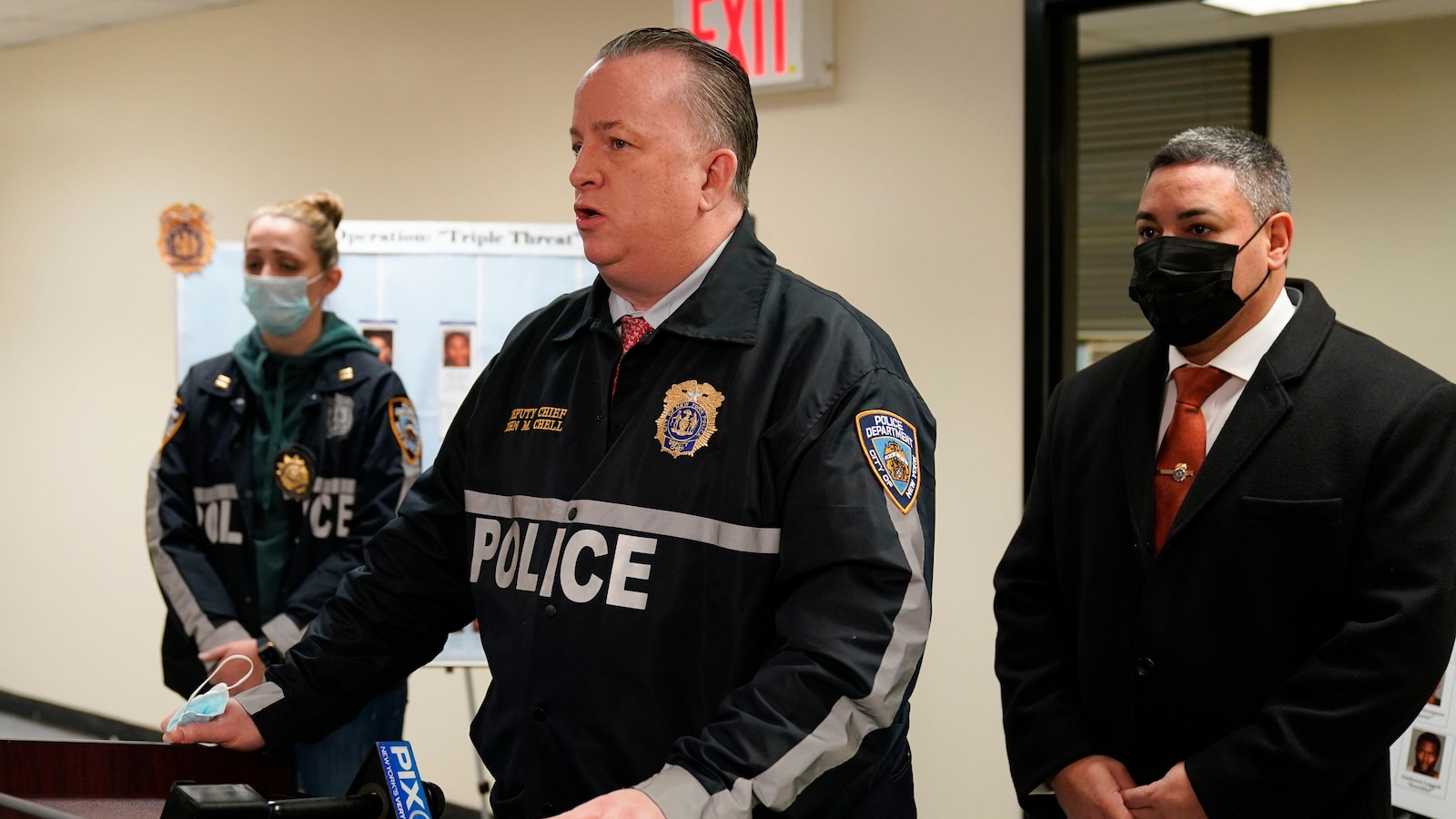
NEW YORK — Several New York City police chiefs are facing criticism from the state’s court system after misidentifying a judge in a controversial social media post that accused her of letting a “predator” loose on the city’s streets.
The episode marked an unusually public dispute between court officials and the city’s police leaders, who rarely go after sitting judges by name.
In a post sent from his official X account on Tuesday, NYPD Chief of Patrol John Chell named a state Supreme Court judge, writing that she “did not do her job” when she ordered the release of a man who police say is a repeat offender within the city’s transit system.
“She set free a predator back into the community, who may be on your next train, or walking the streets of our city, looking for his next victim,” he continued.
The missive was shared by three high-ranking NYPD officials, garnering hundreds of thousands of views and several angry comments directed at the judge. Some posters circulated a photo of a New York judge with the same last name.
On Thursday night, a spokesperson for the state court system, Al Baker, said the department had gotten multiple facts about the case wrong.
“The recent social media posts from NYPD officials criticizing a recent bail decision not only indicated that the crime allegedly took place in the wrong county, it also named a judge that did not preside over the case,” Baker said.
The NYPD’s media relations office did not immediately respond to a request for comment Thursday evening.
The NYPD has taken a more aggressive approach on social media in recent months, railing against those who are perceived as soft on crime or unfairly critical of the department.
Prior to the court’s statement, the NYPD’s top spokesperson, Tarik Sheppard, said he “fully supported” the decision to condemn judges, adding that the practice would continue in the future.
“The judge plays a critical role and if any one of us is not doing our job, we should be transparent about that,” he said. “It’s very intentional.”
Steven Zeidman, the director of CUNY Law School’s criminal defense clinic, said the post had crossed a line, putting a judge in harm’s way.
“While the NYPD apparently believes it should have the right to post opinions and reactions to judicial decisions, the danger, on full display by this ineptitude, makes the case why that is a very bad, and dangerous, idea,” he said.
According to a criminal complaint, police arrested the man named in Chell’s post on Feb. 23, accusing him of jumping a subway turnstile without paying and possessing narcotics and a stolen iPhone.
Prosecutors in the Bronx requested he be held on bail of $10,000. But Judge Michele Davila — the actual judge presiding over the case — set him free, agreeing with defense attorneys that the man was not a flight risk. Though he has several prior arrests, he had not missed a court date since 2007, Davila noted.
New York law generally requires judges to make bail decisions based on the likelihood that a criminal defendant will return to court.
The message Chell shared also featured the man’s mugshot, despite a New York law that bans the sharing of those images in most circumstances. An NYPD spokesperson said the department was authorized to share mugshots for public safety purposes.
Earlier on Thursday, before the post was found to have misidentified the judge, City Hall spokesperson Charles Lutvak defended the police chief’s comments about the judge in a statement to Gothamist.
“When misinformation festers on social media,” he said, “the NYPD is countering it with facts.”
The New York City Police Department (NYPD) Chief recently found himself in hot water after incorrectly identifying a judge in a social media post criticizing a bail decision. The incident has sparked controversy and raised questions about the role of law enforcement in publicly criticizing judicial decisions.
The controversy began when NYPD Chief Terrence Monahan took to Twitter to express his frustration over a judge’s decision to release a suspect on bail. In his tweet, Chief Monahan incorrectly identified the judge as Judge Laura Johnson, when in fact, the decision was made by a different judge.
The error was quickly pointed out by members of the legal community and social media users, leading Chief Monahan to delete the tweet and issue an apology for the mistake. However, the damage had already been done, with many questioning the appropriateness of a high-ranking law enforcement official publicly criticizing a judicial decision.
Critics argue that Chief Monahan’s actions undermine the separation of powers between the police and the judiciary, and could potentially influence public perception of the judicial system. They also point out that judges are bound by legal standards and guidelines when making bail decisions, and that it is not the role of law enforcement to publicly criticize or interfere with these decisions.
On the other hand, supporters of Chief Monahan argue that he has a right to express his opinion on matters that impact public safety and law enforcement. They believe that his criticism of the bail decision was justified, given the seriousness of the crime and the potential risk posed by releasing the suspect.
This incident highlights the complex relationship between law enforcement and the judiciary, and raises important questions about the appropriate boundaries for public criticism of judicial decisions. While it is important for law enforcement officials to speak out on issues that impact public safety, it is equally important for them to do so in a respectful and accurate manner.
Moving forward, it will be important for Chief Monahan and other law enforcement officials to exercise caution when commenting on judicial decisions, and to ensure that their statements are based on accurate information. By upholding professionalism and respect for the legal system, law enforcement can maintain public trust and confidence in their ability to uphold justice and public safety.


